Writes: Bicky Sharma
A few days back – on the night of 12th April – Darjeeling witnessed an unfortunate case of man-made disaster in the centre of its heart, Daroga Bazar, when a fire burnt down a lot of smiles and hopes with it.
This was definitely not the "first of its kind" of an incident in our town that we'd be surprised – perhaps, this was definitely not the first time that the flames showed all its might to put some lives on hold, and this was definitely not the only time that the sincere labour to earn their bread and butter was denied, but then it had enough intensity to make us think amidst the sniveling and the sorrow. Three business stores and an equal number of godowns were gutted down to ashes, as people watched the event unfold before them quite helplessly.
I, personally, have walked through the lanes of Daroga Bazaar throughout my student life, and was an exclusive customer to one of the stationery stores – Metro – that faced the fury, and getting to know about the catastrophe, the faces of the people working in the store started flashing in my mind.
A twinge of guilt, and not sympathy, struck my heart as we have failed them and similarly one day, we will be failed too. The ever helpful and hardworking people are enduring such a misfortune today, but then there are hundreds of other such people around the town, the same number of similar construction exist. It wasn’t the first of its kind of incident, and it may not be the last, but are we ready to face and fight such accidents in future? And if in case such accidents occur again, who all are to be blamed? Who will own up, and take the responsibility?
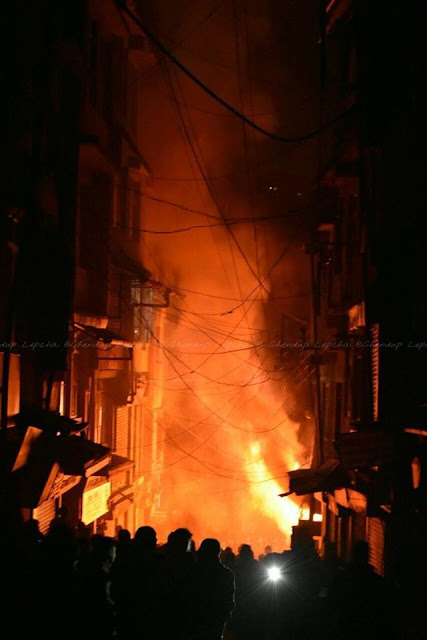 |
| Darjeeling ablaze on Metro bookstore line |
Obviously, there must be someone we can hold responsible for all this, or do we wait to see the entire town razed to ground?
We live in a land of mercy. We live in a knife-edge situation, and have nowhere to walk but straight, and even a slight turmoil and we are in deep trench. We live in a constant fear of facing several calamities like landslides and earthquakes, and just pray that we pass through them safely. Prayer and complaints have become a common man’s remedy to all the predicaments.
Devoid of proper planning or safety measures against the unforeseen circumstances, we can just depend upon God’s mercy for our safety. We are fortunate that God has his eyes upon us and that we are still safe, but with the prevailing administration and the governance system, if only for once God were to turn a blind eye on us, we would become the most helpless people ever.
Perhaps, we will never find solace under any government and the kind of (mis)governance we are habituated to. Adding to the natural disasters, now we have a new challenge to face, prepare ourselves to fight against the fires that seem to erupt anywhere and everywhere across the town.
It is not a point of concern for just Darjeeling, but an alarm for the entire stretch of hills.
As I mentioned before, it wasn’t the first fire in the town, several other old structures around the town have already perished to the flames including the recent blaze in Dowhill School of Kurseong.
Though there is no definite trend in the conflagration, one has enough reasons to question the cause despite all the rhetoric. Was it really an accident, or a deliberate act of sabotage?
People living around the place of incident have reportedly complained that their homes where latched from outside while the fire took place, and they also complained about the smell of kerosene at the spot. The fire, prima facie, looked well orchestrated. Considering all the facts at disposal, one can deduce that the fire was a part of a full-proof conspiracy. But then, if it is a conspiracy, who do we put the blame on? I would rather not give it a political angle as no party or organisation would undertake such an act of suicide just a few days before the elections.
So, for now, let us stick to the theory of drug addicts causing all the fuss, the closest of the theories till now, and let the police and law take their course.
The administration of Darjeeling happens to be one of the most slacked bodies of administrators. The people of the hills are not very demanding, and are so very busy trying to earn their bread and butter that they don’t even look at what is going around.
As far as I am concerned, The Darjeeling Municipality should share the initial blame in the affair. I highly respect our municipality chairman, and acknowledge his hard work and sense of responsibility towards the town. It was due to his effort that the fire could be controlled in time, as he tried to reach out to the water-trucks to ferry water to doze off the fire. But still, I stick to the point that the municipality somewhere has failed the people.
While the fire-fighters say that it took almost an hour for them to arrive because of the inaccessibility to the site, we must keep in mind that most of the town is connected with similar streets, roads, and pavements that would also not be accessible to the fire-fighters during such emergencies. So, are we going to wait and watch the places have no access to fire brigade and use the same excuse again and again for every other case?
A quick glance at the statistics on the safety-equipments available with the municipality shows how appalling and pathetic fire-safety measures are in our town.
While the town could boast of around 113 fire-hydrants in 1950s, there are, as of now, only 8-10 hydrants. And while most of the parts within the town were accessible previously, given the well drawn town-planning, most, if not all, part of the town, especially its interiors, are inaccessible today.
It is indeed shocking to see the utter apathy on the part of Municipal authorities, that while we have suffered so much of loss on account of fire, the municipality has not yet taken any step to install the most needed fire-hydrants around the town.
So, does it not require some thought from the officials to look into the matter with some seriousness and sincerity?
While the number of multi-storied structures in the town is rising, the place is being squeezed breathless to meet the demands of development. So much so that the fire brigade takes an hour, and, in fact, more to reach a place set ablaze in the middle of the town.
If such is the case of people living in downtown Darjeeling, do the people living in the outskirts and on the margins, even hope about their arrival in the first place?
Given the dismal state of affairs in our town, I have often wondered, is development a curse? or is the municipality not being able to give the town a system of planned-development? Or, is it that the municipality is still not prepared to manage, and sustain any development at all? Or are those running the Municipality incompetent nincompoops who should not have been elected to run the affairs of our town to vegin with?
Let us now consider the role of the fire-fighters – the people with the fire-department – a permanent job holder with the government - who get paid on a regular basis just to keep the town safe from fire and other hazards.
The realities of the fire brigade in Darjeeling are different. I recall how a house in our village had caught fire during the night, and the locals frantically tried calling the fire brigade for at least an hour, but sadly, there was no response from the other side. Finally, some guys had to run up to the fire station, and inform them about the situation in person – perhaps, waking up some of them from their deep slumber.
Such is our helplessness in emergencies like fire-breaks, it takes at least an hour to make the Fire Brigade aware of such incident, and when they finally reach the disaster-site, they happen to run out of water in the first few minutes itself!
The irony is that while they are being paid to fight fire and to keep people safe, they generally are caught off-guard and do not believe that a fire can erupt anytime and anywhere.
Actually, to be honest, the efforts of the people trying to challenge the flames with all the buckets and jerry cans is much more effective than the expertise of fire fighters.
If it was not for the prompt action of the locals, and later the municipality chairman, the fire-fighters would have watched the whole of Daroga bazaar burn down with empty water-pipes in their hands.
Most intriguing and disappointing fact in the entire case is the apparent failure of law and order in the town.
It is, in fact, absurd that some people get the courage to latch up the houses around the middle of the town during the night, and set ablaze a godown which well explains how inefficienct the law and order system is at our place.
We truly live at the mercy of God. We live amidst the fallacies, and fake promises. We live within the insecurities and fear. Our existence has now just the significance to be sorry for whatever happened and to pray that it doesn’t happen again.
So the question remains, who stands accountable to the loss of the victims?
The same fire which would keep their “chullah” running, has now decided to burn their means of living. So who is going to keep the stoves in their kitchen burning, while the cause of the fire is never ascertained?
Will the real person or organization who we can hold accountable, please stand up? please stand up?
Via TheDC


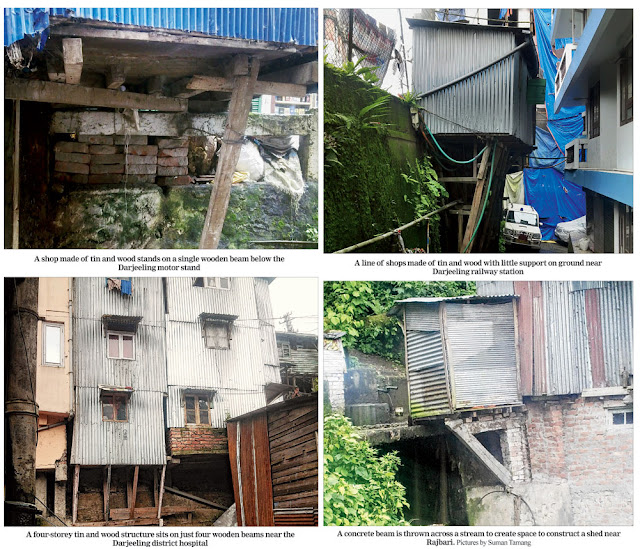

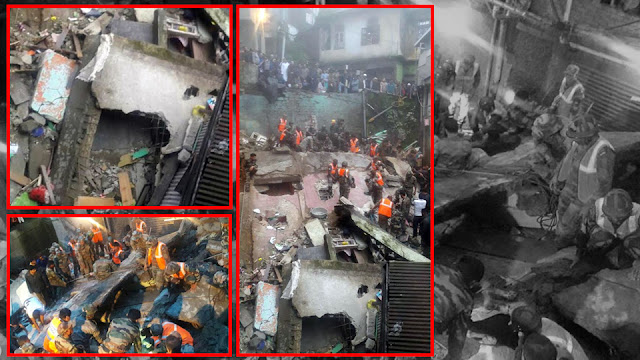


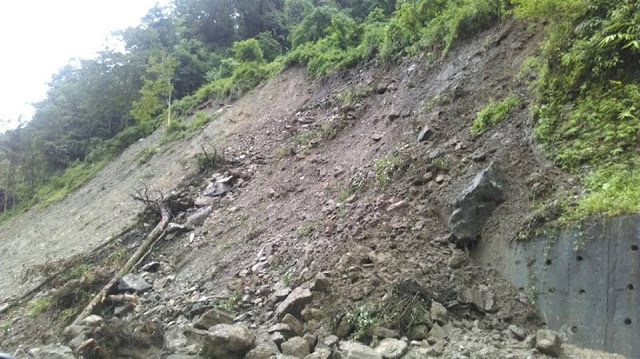










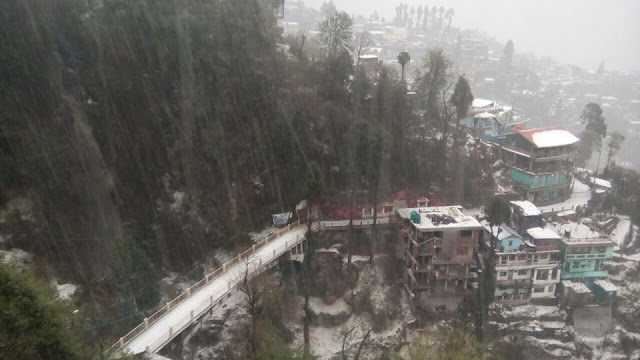

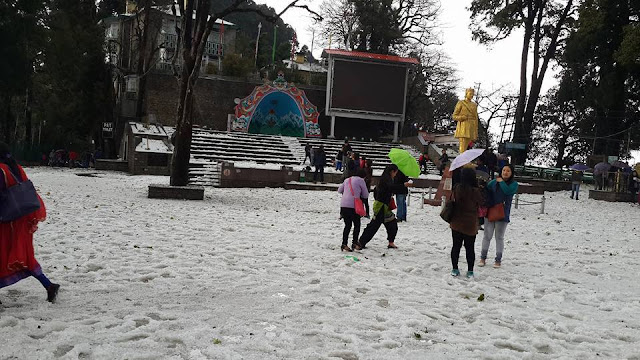










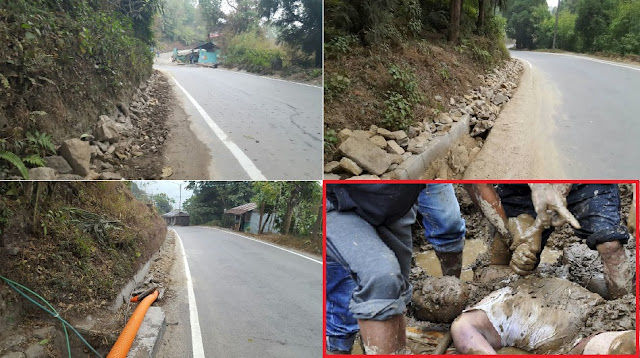

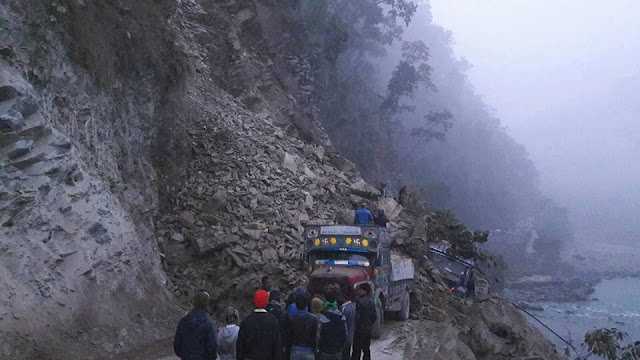


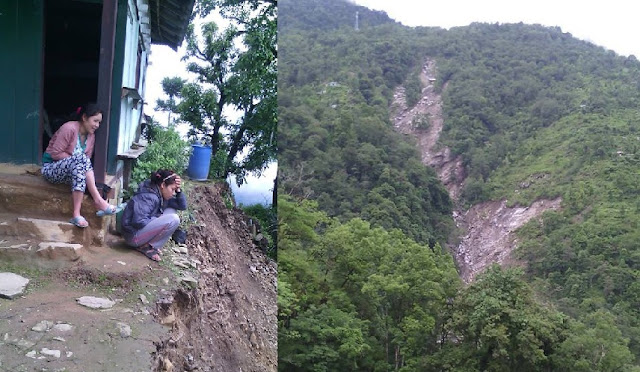
.jpg)



